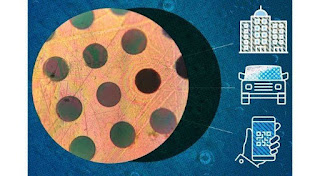Developed with the help of a novel polymerization process, MIT chemical engineers have developed a two-dimensional polymer that self-assembles into sheets, unlike other polymers that often form one-dimensional chains.
Polymers that consist of all kinds of plastics are formed with chains of building blocks that are known as monomers. The chains grow by adding new molecules at their ends. After formation, the polymers can be shaped into 3D objects via the process of injection molding.
Scientists have often hypothesized that if polymers could be induced to grow into a 2D sheet, they’d be strong yet lightweight. However, previous failed attempts made them believe that achieving something like this was impossible.
One of the reasons why this was the case, as if even one monomer flips up or down out of the plane of the growing sheet, the material would start to expand in three dimensions, not allowing a sheet-like structure to form.
However, now researchers have come up with a novel polymerization process that allows them to create a two-dimensional sheet dubbed polyaramide. For the monomer building blocks, they use a compound dubbed melamine that contains a ring of carbon and nitrogen atoms.
In perfect conditions, these monomers can grow into two dimensions, forming discs. The discs stack above each other, held together by hydrogen bonds between layers, whilst creating a stable and strong structure.
Moreover, since the material is self-assembled in solution, it can be mass-produced by increasing the quantity of starting materials. They also demonstrated that they could coat surfaces with films of the material that they call 2DPA-1.
Researchers also discovered that the new material’s elastic modulus -- the force it takes to deform a material -- is between four and six times more than bulletproof glass. For destroying the material, the energy required is twice that of steel even though the material has just one-sixth the density of steel.
The material is also impermeable to gases, thanks to the monomers that lock together, preventing molecules from getting in between them.
Researchers are now looking into more detail on how the polymer is able to form 2D sheets while also playing with changing its molecular makeup to form other kinds of novel materials.
Source:MIT





This awesome. How does the material react to crack growth, corrosion, fatigue and bearing load?
ReplyDelete